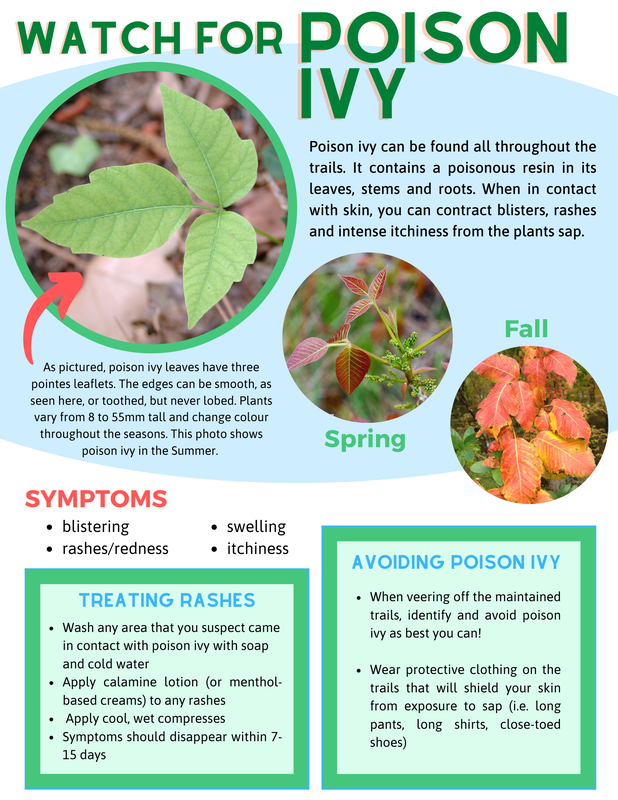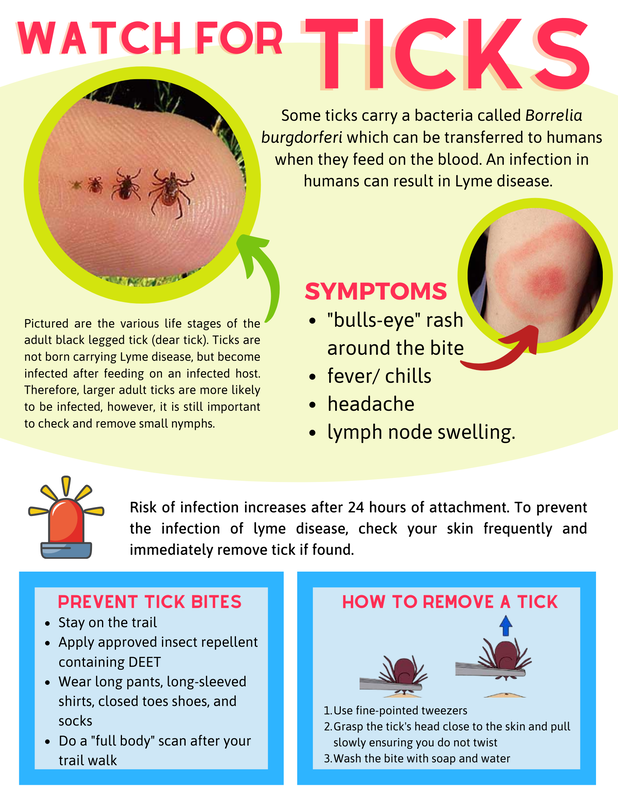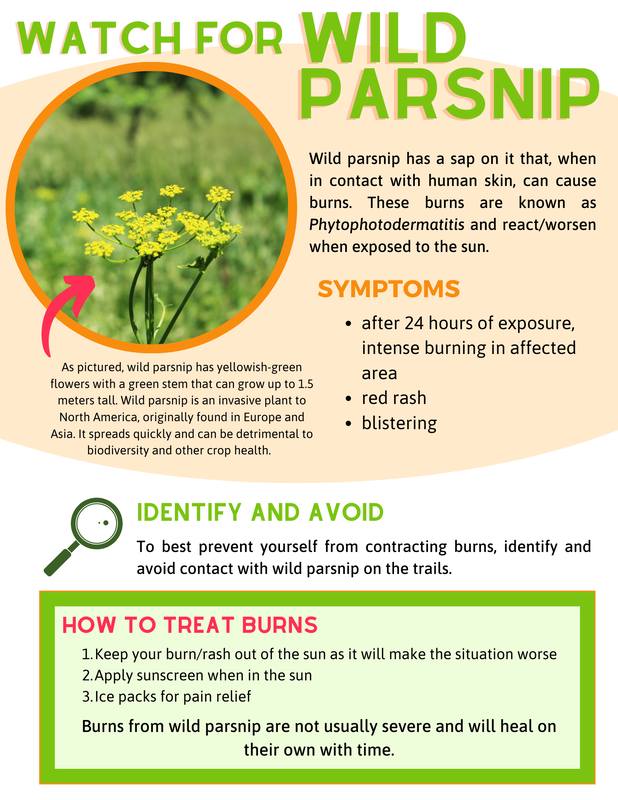|
The Centre’s slogan “Nature…Discover, Enjoy, Protect” encourages people to get outdoors and appreciate the green spaces available to us in the Ottawa Carleton region. When exploring nature, it is important to do so safely. Following these guidelines will ensure your nature walk is a positive experience.
The best way to avoid contact with plants such as Poison Ivy and Wild Parsnip that can grow along trails is to stay on the trail and avoid picking flowers. Furthermore, being cognisant of their shape is also important (see infographics below). If you are intending to go off the trail, or are looking to be safer, wear long pants and close-toed shoes. The fabric will prevent the sap from coming in contact with your legs. Should contact occur, wash the affected areas with cold water and soap. If a rash develops contact your doctor for further treatment. Lyme Disease is of concern in the Ottawa region. Lyme disease can be contracted from the bite of an infected black legged tick (Deer Tick). Ticks like to live in long grasses and are prevalent in the Ottawa area. To limit your exposure to ticks, remain on the trail and wear long pants. Long pants can be tucked into tall socks for added protection. Furthermore, the use of insect repellant containing DEET can also deter ticks. Upon completion of your hike, do a quick scan to see if you’ve been bitten. For more information, review the infographic below. *Click the images below to view them at a larger scale. These infographics were created for use on the Ottawa-Carleton Wildlife Centre trails.
0 Comments
Leave a Reply. |
The OCWCJoin the OCWC's adventures by seeing what's new, event updates, and more! Archives
July 2023
Categories |



 RSS Feed
RSS Feed